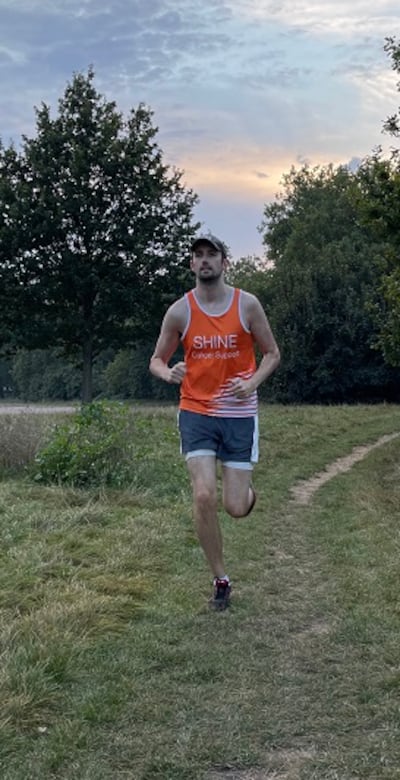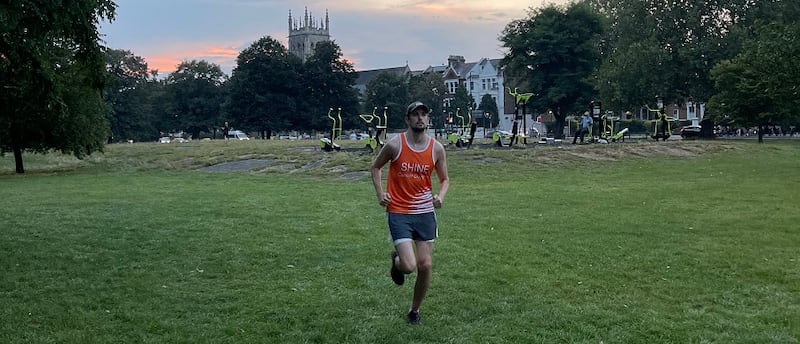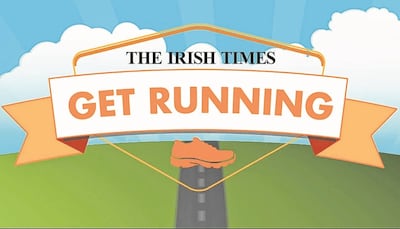October 3rd is nearly here and the London Marathon will be going ahead, with 50,000 runners heading from Greenwich to Westminster on staggered start times and another 50,000 participating virtually in what may be the city's most emotional marathon ever.
All going well, it will be my first 26.2-mile race.
There are two reasons why I wanted to run the marathon. As a survivor of a rare bone cancer called Ewing’s sarcoma, I’d been told five years ago that running a marathon was going to be very difficult for me. Without her realising it, the doctor who said that was setting me a challenge. Still in my mid-20s at the time, I considered her statement for a long while before making my decision. Like many cancer survivors, by running a long race I also wanted to show that I was alive and well after my ordeal, and once again employable.
In May 2016, aged 24, I received the Ewing's diagnosis and immediately began aggressive treatment to shrink the tumour, which was the size of a melon in the right side of my chest, protruding from a rib. I had four months of chemotherapy for nine hours a day, three days a week, every three weeks, followed by six weeks of radiotherapy and additional chemo. On March 1st, 2017, a date I now fondly call my re-birthday, Mr Simon Jordan, consultant thoracic surgeon at Royal Brompton, and his team removed what was left of the tumour. It was gone, the margins were safe and the operation was an outstanding success.
My surgery had been postponed for a month because I was so ill
But it was a long and difficult recovery. Radiotherapy had targeted the right side of my chest, primarily hitting the tumour but also my right lung as an unintended consequence. I developed pneumonia and severe pneumonitis, which is inflammation of the lung, during the winter of 2016 and throughout much of 2017. My surgery had been postponed for a month because I was so ill.
When Mr Jordan and his team did proceed, they removed sections of four of my ribs and moved a muscle from my back, the LD flap, up under my shoulder and over my pectoral to cover a mesh prosthesis that was layered in cement. The prosthesis was inserted into my chest to replace the gap in my ribs.

Treatment and surgery had taken a huge toll on my body. Two years later, in 2019, I had recovered well enough to decide to apply for a charity place in the London Marathon 2020. Shine Cancer Support, which helps people in the United Kingdom in their 20s, 30s and 40s, gave me a coveted spot. (to donate, see justgiving.com).
"I think it's a very good idea," Dr Jeremy George said, when my mother told him of my plan. Dr George, my chest physician at the London Clinic, made key early decisions about my care that helped save my life.
Intense running
I had accepted a place in the marathon without fully understanding how my body would respond to intense running. The right side of my chest no longer expands as well, making breathing that bit harder when I really need to take in more oxygen. The life-saving prosthesis, which I’m grateful to have and which is a marvel of modern medicine, is part me and part foreign object in my chest. I occasionally get abdominal cramps below it, whereas I don’t on the other side. Some days when I run, my chest feels particularly tight and then sometimes I don’t notice it there as much.
When the pandemic struck in March 2020, London Marathon organisers pushed back the April 27th start date to October 4th. In hindsight, it seemed very optimistic at best that any kind of large gathering event would actually go ahead, even by then. As we now know, flattening the curve and getting life back to normal would take much longer. I had been deep in training for three months since January of that year, totally committed.
March 2020 will understandably evoke different emotions, depending on your circumstances. Vaccines seemed a long way away.
Never mind the marathon, though. Now I had a different problem: surviving the pandemic.
My goal had always been to run the official London circuit so, without hesitation, I deferred my place
As someone with a radiated lung, who was potentially more vulnerable to a new and deadly virus, I, like many others, had a new threat to worry about. Then, on August 7th, 2020, the marathon was officially changed from being a mass participation event to one with elite runners only. I was given the choice to defer my place until 2021 or run in a virtual event. My goal had always been to run the official London circuit so, without hesitation, I deferred my place until October 3rd, 2021.
And here we are. As I was lacing up my running shoes again this summer, after all the chaos and cancellations caused by the pandemic, it was hard to believe that even this marathon would go ahead. Regardless, I had made a commitment and would now see it through.
My life had changed during the pandemic. In the space of a year, I was hired by Macmillan Cancer Support to work from home on their support line and subsequently was promoted to the role of stories and voices co-ordinator in its media and PR department. I work happily for the very charity which helped me so much during my own cancer experience.

Challenges
The pandemic has affected all of us in different ways. When June 2021 finally came around and I was due to start serious training again, I did not have the same motivation as when I first wanted to run a marathon. There have been more running challenges this time around. Training in summer heat has been tougher for me than in autumn or winter. I don’t do well on treadmills and much prefer to run outdoors through London’s parks. But with temperatures soaring above 20 degrees for much of June and July, occasionally hitting the high 20s, I’d feel wiped out and dehydrated much faster than in the chill wintry breezes I had been used to in early 2020.
I’m tall (6ft 5in) and probably spent more time sitting than I normally would during lockdowns and working from home. Sciatica developed in my lower back and became so aggravated recently that I missed several runs and ended up being seen by a doctor at St Thomas’ Hospital who gave me anti-inflammatories. I was back training after a few days.
"Go slowly at the start and it will be better at the finish," event director Hugh Brasher advises first-time marathoners.
And run I will.
Friends are travelling from Galway and Dublin to support me on the day. My mother, who lives in Mayo, will fly over from Knock. My girlfriend, Helena, a Londoner, and her family will cheer me on. After more than 18 months of separation, we’ll all be together again.

Sign up for one of The Irish Times' Get Running programmes (it is free!).
First, pick the eight-week programme that suits you.
- Beginner Course: A course to take you from inactivity to running for 30 minutes.
- Stay On Track: For those who can squeeze in a run a few times a week.
- 10km Course: Designed for those who want to move up to the 10km mark.
Best of luck!










